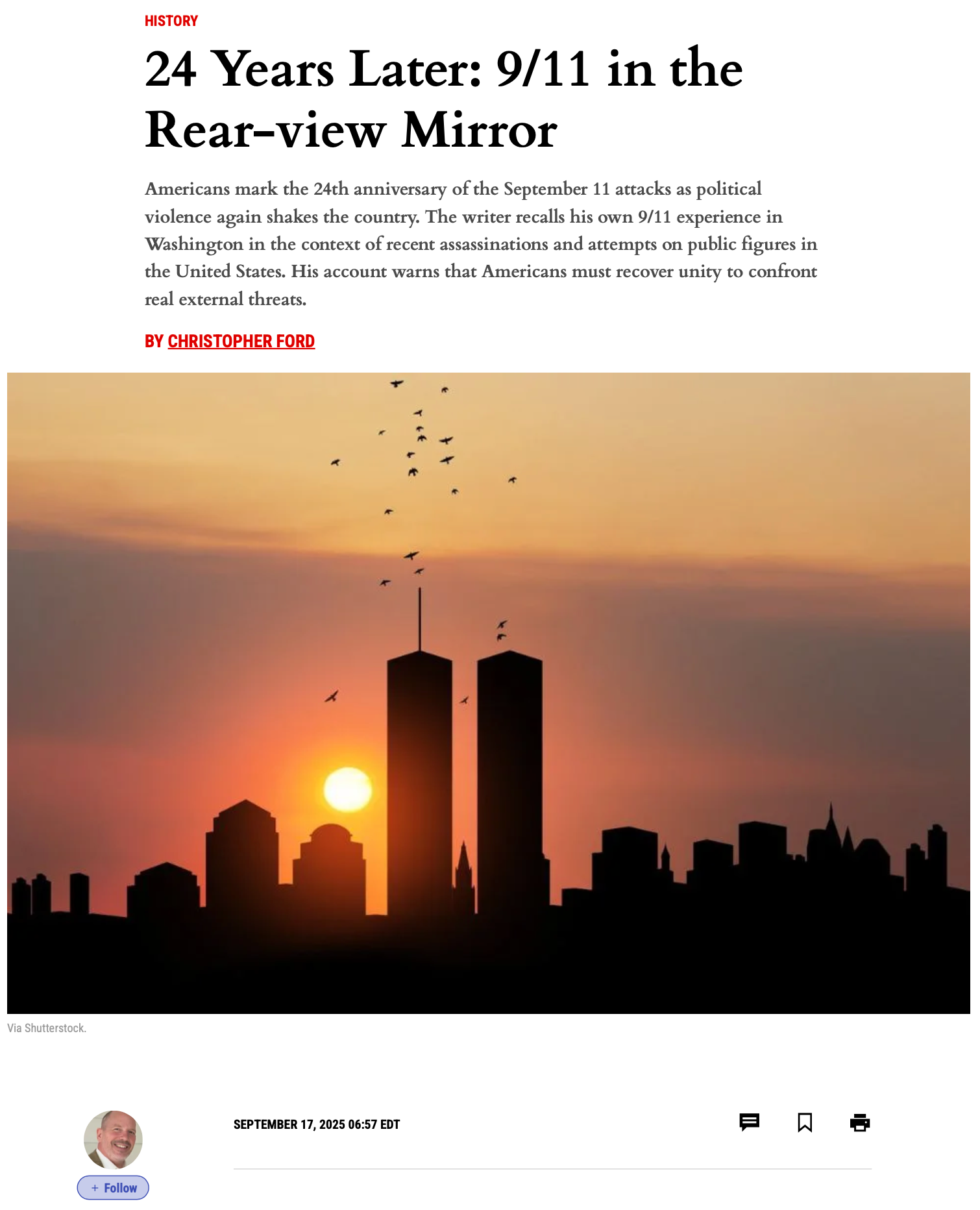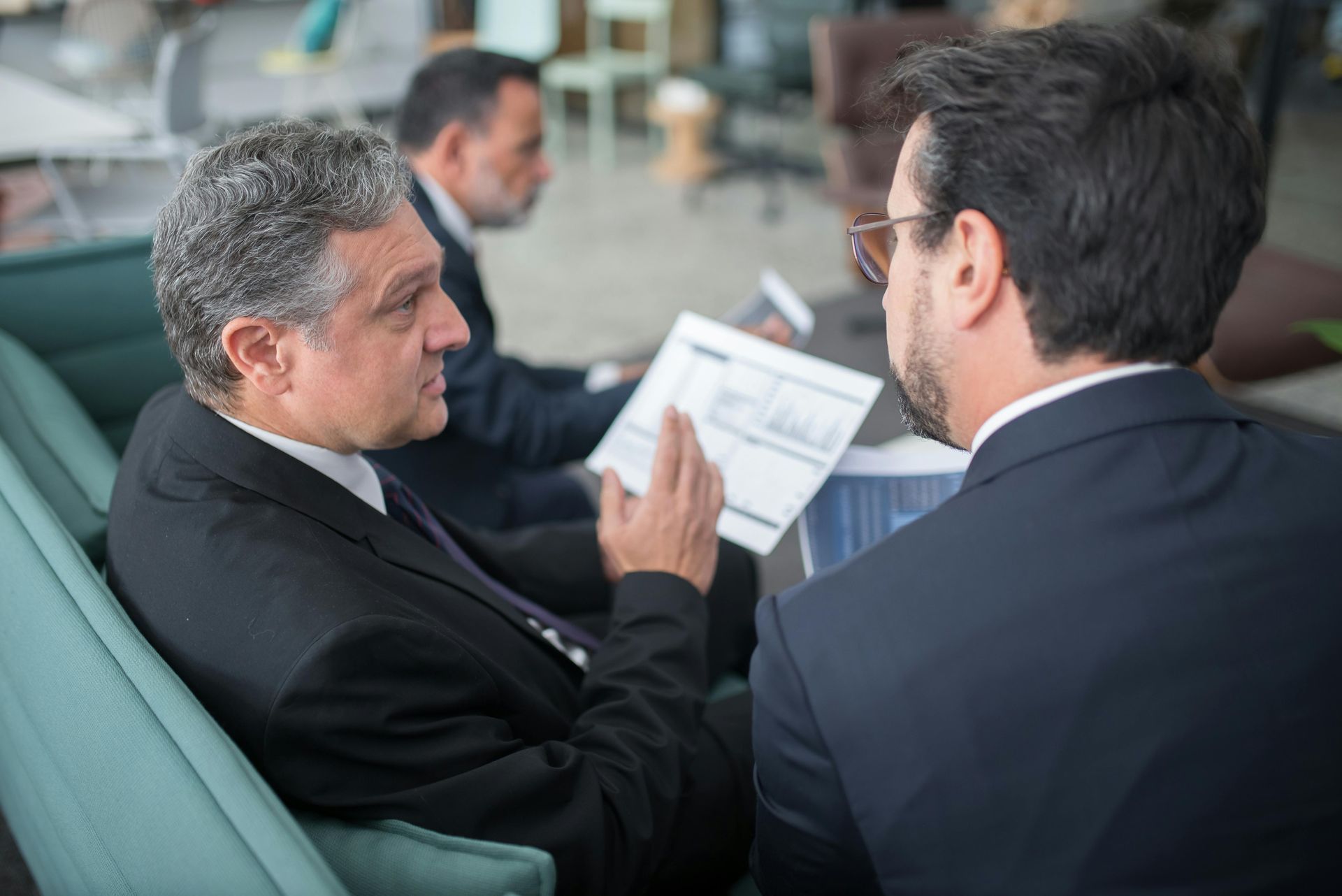Diplomatic Dialogue Around Existential Risk: The Intellectual Architecture of the “CEND” Initiative
Below is the prepared text upon which Dr. Ford based his oral remarks at a conference sponsored by the Centre for the Study of Existential Risk (CSER) at Cambridge University on June 17, 2025.
Good afternoon, and thanks to Paul Ingram and the Centre for the Study of Existential Risk (CSER) or inviting me.
Paul has encouraged me to talk a bit about the “Creating an Environment for Nuclear Disarmament” (CEND) initiative that I began at the U.S. Department of State back during the First Trump Administration, and I’m happy to do so.
The Origins of CEND
Pre-CEND Disarmament Policy, Politics, and Performance
My bureau hosted the first CEND meeting at the U.S. Department of State in July 2019. Its institutional origins, however, lie somewhat earlier, in work we did when I ran the WMD and Counterproliferation Directorate at the U.S. National Security Council (NSC) staff in 2017.
It’s important to remember the nuclear disarmament-related context here.
When I first arrived at the NSC to take the helm of the WMD directorate, we were taking over from the Obama Administration – which had gone to great lengths to encourage the global belief that we were moving inexorably toward nuclear weapons abolition. As you may recall, President Obama made this idea quite central to his political “brand,” if you will, by emphasizing it in a famous speech he gave in the Czech Republic – at Hradcany Square in Prague – in April 2009. There, he pledged that “the United States will take concrete steps towards a world without nuclear weapons … [and] begin the work of reducing our arsenal.”
To be sure, the U.S. nuclear arsenal was by that point already down to only a small fraction of its Cold War size. In fact, by the end of the George W. Bush Administration, our arsenal had been reduced by a stunning 90 percent from its Cold War peak, having come back down to its smallest size since the Eisenhower Administration in the 1950s.
But rhetoric and symbolism apparently sometimes mean more than action to the disarmament community, and no previous U.S. president had leaned into the rhetoric and imagery of nuclear abolition like Obama’s team did with such flair. And indeed he was rewarded for this with the Nobel Peace Prize later in 2009.
Some of this rosy glow had faded by the end of 2016, of course. The Obama Administration had indeed set in motion further reductions in the size of the U.S. and Russian nuclear arsenals with the New START agreement of 2010, but the disarmament community – its expectations raised to what was surely a wholly unrealistic fever pitch by Obama’s own rhetoric and antinuclear atmospherics – nonetheless squirmed as his administration also set in motion a very expensive program to modernize the United States’ ageing strategic nuclear delivery systems for the first time since early in the Reagan Administration.
Before long, commencement of the first phase of Vladimir Putin’s war of aggression against Ukraine in 2014, and Russia’s violation of the Intermediate-range Nuclear Forces (INF) Treaty, also dampened hopes for more progress by making new arms control negotiations more politically challenging and reducing American faith that Putin would actually keep any new deal that might be agreed.
Accordingly, the bloom had indeed somewhat left the Obama disarmament rose by the time I arrived at the NSC in January of 2017, and the policy community’s disarmament discourse felt confused and fractured.
Having worked on such issues since my first tour at the State Department during the George W. Bush Administration, however, I had long since developed the impression that global disarmament discourse had become deeply dysfunctional. I hope this won’t sound overly harsh, but to me it seemed that disarmament discourse was at risk of becoming little more than a form of anti-American and anti-Western political performance art alarmingly divorced from any real concern with the practical challenges of actually achieving nuclear weapons reductions – much less eventual abolition – in the real world in which statesmen and security professionals lived and operated.
These pathologies were driven home to me with particular clarity in a discussion I recall having at a conference in the French town of Annecy in March 2007 with Sergio Duarte – a Brazilian diplomat who shortly thereafter was appointed to be the United Nations High Representative for Disarmament Affairs, thus becoming in a sense the world’s highest-ranking disarmament official. In my remarks to the conference on behalf of the George W. Bush Administration as U.S. Special Representative For Nuclear Nonproliferation, I had stressed how large the U.S. nuclear reductions had been since the end of the Cold War.
In discussions with Sergio afterwards, I pressed him, in light of these facts, on how he – and others in the disarmament community – could keep on insisting that the United States had consistently “failed” to make any meaningful progress on nuclear disarmament. His reply was enlightening.
As he explained it to me, the United States deserved no credit for scrapping all those weapons because we no had longer needed them on account of the end of the Cold War and the evaporation of our nuclear rivalry with the Soviet Union. Because these weapons had simply become surplus to requirements, he argued, we deserved no real credit for having gotten rid of them.
This was eye-opening to me, for it brought home the degree to which the prevailing disarmament discourse had become a surreal exercise willfully divorced from reality. Rather than being at least pleased that so much dismantlement had already occurred and simply urging that this process continue, Sergio told me it only “really” counted as “disarmament” for a country to relinquish nuclear capabilities that it still needed for its national security. Getting rid of nuclear weapons was therefore not per se creditable. It was only by a performative act of strategic self-harm that one could apparently be accepted as actually making progress toward disarmament.
This logic seemed to suggest, in turn, that the disarmament community’s actual objective was not actually to see nuclear weapons go away than simply to undermine the security of the hitherto nuclear weapons-possessing states. It also clearly signaled to me that major portions of the global disarmament community had reached an advanced state of intellectual and moral bankruptcy.
Sergio’s comments indicated that the disarmament discourse of that period essentially precluded genuine engagement with nuclear weapons possessors on precisely the real-world security challenges on which progress would need to be made if movement towards were to be able to continue. (The point wasn’t about about how to allocate any “credit” for disarmament progress, but if there was to be a future for disarmament dialogue and diplomacy, it did matter for the future of disarmament dialogue, what was actually being demanded of nuclear weapons possessors!)
That conversation with Sergio Duarte is the point to which, in my own mind, I really date the birth of the CEND idea – though of course as an actual institution it didn’t emerge until more than a decade later. That was when I started thinking about what could be done to redirect disarmament discourse in a less patently stupid direction, and onto a path along which countries might actually have real conversations about the kind of security conditions that it might be necessary to create in order for real-world leaders to make real-world decisions to reduce their nuclear arsenals.
Rather than simply sneering at a country for getting rid of nuclear weapons that it no longer needed, I thought, why not acknowledge that not needing so many of them was actually a good thing? And, if that were the case, what could the diplomatic community do to encourage more countries to reach such conclusions?
If there was indeed any hope of disarmament, I felt, it clearly did not lie in the sterile posturings of the performative antinuclear moralism that seemed to have taken over the disarmament community. Rather, the better path surely lay in actually trying to ameliorate adverse conditions in the security environment, so that more and more countries felt less and less need for such weaponry.
And that’s why, while CEND was formally “born” at the State Department in 2019, I would argue it was “conceived” in France in 2007.
The 2017 Nuclear Vision Review
In its specifics, CEND grew out of a review that I undertook at the National Security Council staff over the summer of 2017. Having arrived in the wake of the Obama Administration’s pro-disarmament atmospherics, I felt it was important for us in the First Trump Administration to have something coherent and constructive to say on these issues for ourselves, one way or the other.
So we conducted what I myself thought of – though it really had no official name – as the “2017 Nuclear Vision Review.” In the most basic sense, this was an after-action report on the entire Obama disarmament undertaking.
We gathered up all the available U.S. intelligence reporting then available on how other counties had actually – that is, privately, in their own deliberations and policymaking – interpreted Obama’s “Prague Agenda,” with a particular focus upon its impact upon problem states of the international community such as our strategic adversaries and rogue state proliferators.
We also quietly brought together a small but perspectivally diverse group of think tank scholars and academic experts for roundtable discussions on what factors seemed to lie behind the stalling of nuclear weapons reductions in recent years, what might help restart them, and what challenges would have to be met in order to envision a plausibly stable, nuclear-weapons-free world.
I can’t pretend that we definitively answered all these questions, of course, but these discussions were very thoughtful and very helpful to our deliberations. They fed into an internal document I drafted for National Security Advisor H.R. McMaster, summarizing what I believed this exercise had taught us.
I no longer have access to that document, of course, it being quite highly classified on account of all that intelligence information on how various world leaders seemed really to view and respond to Obama’s disarmament agenda. Nevertheless, I do recall that the conclusions were somewhat demoralizing, at least from a disarmament perspective. The Prague Agenda may have gotten Obama a nice medal, but apart from New START – which was an important agreement, but one that was admittedly merely evolutionary rather than revolutionary, and in no way genuinely transformative – the “Prague” initiative achieved remarkably little. Indeed, it actually made some important powers more distrustful of the United States, and more wedded to their own nuclear weaponry, rather than less so.
On the whole, Obama’s Prague initiative seemed by 2017 to have quite run out of intellectual steam. Nor, in fact, did it seem to have any real vision of how it would (or even could) achieve its ultimate ends, apart from muddling forward with the ever-harder problem of negotiating gradual reductions in a context in which major players still felt keeping some nuclear weapons was essential to their security and increasingly feared that reductions would bump up against whatever “minimum” level of capability it was that they required.
And, speaking analytically, it’s not hard to see why things would indeed inevitably get increasingly difficult as reductions continued. I can see at least three problems.
First, even as possessor states’ security sensitivities over making further cuts increased, the requirements for timely verification of such cuts would become ever more demanding while at the same time the incentive to cheat would grow, for the game-theoretically unavoidable reason that the relative potential military advantage to be gained from any given quantum of new or retained nuclear weapons capacity would tend to increase as overall arsenals shrank.
After all, having a few nuclear weapons that your adversary doesn’t know about isn’t that big a deal if your respective arsenals are still quite large. (If I have 2,000 and you have 2,100, this isn’t thatbig a threat to me.) But if overall arsenals are small, a few weapons one way or the other could have huge implications.
This means that as you get toward “Zero” – and particularly at “Zero” – both cheating by prior possessors and proliferation to new ones would become vastly, even geometrically, more attractive. And this would in turn require any disarmament regime to develop extraordinarily intrusive verification protocols, while simultaneously allowing such protocols essentially no margin for error. This would make it devilishly hard to fashion a really good abolition agreement. So that’s a first problem.
Second, one would also have to ensure – in a world in nuclear knowledge and materials could not be un-invented – that the first major crisis between reasonably sophisticated powers did not quickly produce a “reconstitution race,” in which both parties would rush to rebuild a nuclear arsenal, and in which whomever builds new weapons first would feel a powerful incentive to use them on its adversary before that country acquired them too. That risks making “Zero” dangerously game-theoretically unstable. And that’s a second problem.
Third, even if you did manage to figure all this out and make nuclear weapons disappear, moreover, there would still remain the challenge of how to ensure continued avoidance of large-scale conventional war between the great powers once the deterrent effect nuclear weaponry had been removed.
If you couldn’t ensure that a world of nuclear weapons abolition wasn’t one wracked by large-scale conventional great power war, this might make abolition seem worse for humanity than some possible world stabilized by a deterrence standoff with nuclear arsenals of small-to-modest size. So that would be a third challenge.
I am not saying that these problems are necessarily insoluble. That might, or might not, be the case.
My point is merely that these difficulties seem logically inherent in the nature of the disarmament enterprise when it is viewed through the prism of how to make disarmament work as an effective, real-world policy choice.
We never surfaced the full set of findings and information behind the “NVR,” but I did get the opportunity to use it as the basis for my remarks in October 2017 to a conference sponsored by the disarmament activists of the Ploughshares Fund.
I began this de facto rollout of our findings by arguing that “the conventional wisdom of the disarmament community” that “treats nuclear weapons primarily as a cause, rather than a symptom, of insecurity” – that is, those who focus upon “weapons, rather than upon conditions” – had basically gone bankrupt, and that President Obama’s disarmament agenda had run out of steam.
Nonetheless, I suggested, it was “still possible to speak realistically and constructively about nuclear disarmament,” and it was “time to explore alternative approaches.”
“But it may be[, I said,] that the answer isn’t something entirely new, but rather a wisdom that has been hiding in plain sight all along – and in a form with which most of the countries of the world have professed agreement for nearly as long as I have been alive. … [T]he NPT Preamble points out the need for the ‘easing of international tension and the strengthening of trust between States … in order to facilitate’ disarmament. This – and the causal ordering it signals about how to advance disarmament – is the conceptual key to understanding what ‘effective measures relating to nuclear disarmament’ we should pursue in accordance with Article VI [of that Treaty].
“… If there exists a viable road to disarmament in the current security environment … it surely must run through the amelioration of such adverse geopolitical conditions [of tension and distrust]. If we can successfully address those conflicts and rivalries, reducing or even eliminating the weapons themselves may be possible; if we cannot, it’s hard to see how any [primarily] weapons-focused agenda could succeed.”
In concluding, I stressed to the Ploughshares meeting what I argued were some basic truths that needed to be acknowledged:
- how far we are today from the conditions that would actually make elimination possible, and how addressing those underlying conditions is really the rub of the challenge, without which no approach that focuses solely on arms could succeed;
- how little we really know about the future and the threats we might face therein;
- the degree to which a full flowering of the world envisioned by Article VI of the NPT must necessarily await a strategic environment quite different from our world today; and
- the danger that unrealistic expectations about nuclear disarmament, combined with overstated linkages between disarmament and nonproliferation, could put international commitments to nonproliferation at risk.
There would be many, I said, who wouldn’t like hearing these truths.
“But such a vision would not give up on the possibility and the long-term goal of disarmament, either – nor on the hope of negotiating incremental downward steps over time when, and to the degree that, real-world conditions permit. Indeed, if it could escape the conceptual ruts of the current conventional wisdom and devote itself instead more effectively to addressing the conditions of conflict and insecurity that are the real problem inhibiting such progress, such an approach has the potential to end up being a better way to work toward a disarmament-facilitating ‘easing of international tension and … strengthening of trust between States’ (in the words of the NPT Preamble) than any other path available today. After all, Article VI obliges us to pursue effective measures, not ineffective ones. Why not explore new possibilities when what has been tried isn’t working?”
And that speech, in an admittedly lengthy nutshell, was the intellectual foundation of what emerged as CEND a few months later.
CEND Gets Going at the State Department
After I moved from the NSC to the State Department in January 2018, therefore, it was only natural to try to see if we could take this theory and turn it into some kind of diplomatic reality. Hence we started working to establish a new diplomatic dialogue, open, in principle, to any country serious about disarmament-related engagement.
And in fact, a remarkable group of countries actually responded to our invitation. Our first plenary meeting in July 2019 brought together, as I recall, some 40-odd national delegations, coming from
“a wide range of diverse countries — nuclear weapons possessors and non-possessors, industrialized and developing nations, nuclear alliance members and ‘Ban Treaty’ adherents, and key players from both sides of political and ideological fault lines in the Middle East, South Asia, Europe, and East Asia alike — to set this process in motion and identify broad sets of issues that need to be addressed.”
As I put it at that first meeting, our objective was to engage in “exchang[ing] perspectives and brainstorm[ing] ideas” in three general topic areas:
- “Reducing perceived incentives for states to retain, acquire, or increase their holdings of nuclear weapons[;]
- “Multilateral and other types of institutions and processes to bolster nonproliferation efforts and build confidence in, and further advance, nuclear disarmament[; and]
- “Interim measures to address risks associated with nuclear weapons and to reduce the likelihood of war among nuclear-armed states.”
The conceptual touchstone of the effort, we made clear, was
“the insight that disarmament can and will move forward only to the degree that the international community is able to address the security issues that underlie States’ rationales for retaining nuclear weapons.”
Lessons and the Future?
Having resigned from the State Department in early January 2021, of course, I have much less visibility into how the CEND initiative has fared since then. Under the Biden Administration, they moved the CEND coordinating role from my former Bureau of International Security and Nonproliferation (ISN) to the Bureau of Arms Control, Deterrence, and Stability (ADS), and they redirected one of the CEND working groups to look at the impact of emerging technologies upon nuclear disarmament issues.
The cycle of CEND diplomatic engagement, however, survived at least through 2024. As recounted on the Department’s website, in fact, CEND Subgroup 3 issued a report in June 2024 that discussed nuclear risk-reduction measures.
That June 2024 document wasn’t a consensus report agreed by all delegations, and I cannot claim to agree with all that’s in it myself. (It may actually be that nobody agrees with every word in it; as I said, it wasn’t a consensus document.) Nevertheless, the report did represent the fruits of a great deal of quite serious and wide-ranging discussion about the deteriorating security environment and the ways in which various delegations felt that unilateral, bilateral, and/or multilateral risk-reduction measures could help improve things.
Since my ambition for CEND centered not upon trying to drive disarmament dialogue toward any specific conclusion but rather – as a critical but antecedent step – simply upon trying to rescue disarmament discourse from the abject silliness and sterility into which it had fallen, I think this all counts as something of a success.
It remains to be seen, of course, what the Second Trump Administration will do with CEND – or, in the event that the new team is not interested, whether the other CEND stakeholders will continue this dialogue without the United States.
Given President Trump’s professed commitment to a “Peace Through Strength” approach to international relations even while also clearly loathing the nuclear arms race and apparently still hoping to create for himself some kind of grand legacy as a peacemaker, however, it is not beyond imagining that the Second Trump Administration will continue – and perhaps even will advance – the CEND dialogue that the First Trump Administration began.
We shall see. It remains my hope that these diplomatic engagements on which I spent so much time several years ago will be able to contribute constructively to future progress in helping mankind figure out how to meet the challenges of managing existential risk in the nuclear arena.
Thanks for listening.
—Christopher Ford







